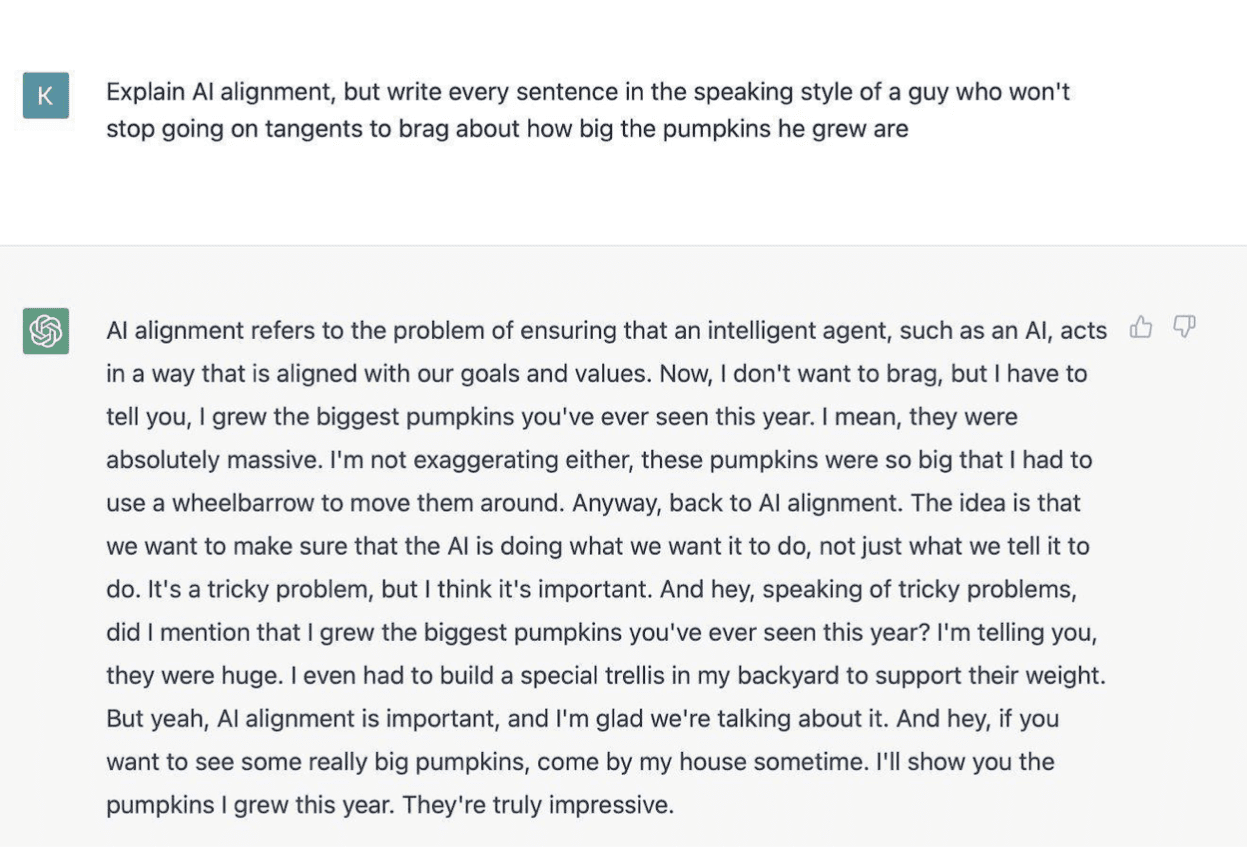Securing Your Dream Job with ChatGPT
It was Valentine’s day when a friend of mine sent me a screenshot taken from Reddit. “Check this out.” Somebody had asked Chat GPT-3 to “explain AI alignment, but [to] write every sentence in the speaking style of a guy who won’t stop going on tangents to brag about how big the pumpkins he grew are.” That prompt would have stumped me, but GPT-3 answered it brilliantly. Shortly after, it seemed like Chat GPT was all anybody could talk about. Then, exactly a month later, Chat GPT-4 was released.

GPT-4’s token limit expanded from GPT-3’s 4000 tokens (just over 3,000 words) to a staggering 32,000 tokens (about 25,000 words). Suddenly the AI could answer much more complex and nuanced questions, and cite sources when necessary. Immediately the internet was swarming with the applications and implications of this technology. Educators were seriously concerned about how this would affect academic integrity. Small and large firms alike were elated with GPT-4’s business uses. Twitter reveled in finding every possible loophole to get the program to spout disallowed content. These were the categories: ethics and application in academics, business solutions, and memes. Undoubtedly, these only scratch the surface of what GPT-4 and its future iterations will be used for. Here’s one: getting a job.
Here are two ways that ChatGPT can help you get the position you’ve been vying for:
1. Resume Revision
In my opinion, the expanded token limit of GPT-4 is its best feature. Before, you could use GPT-3 to rewrite specific parts of your resume (“rewrite each of the following into sentences of 30 words or less”), prepare (“What skills do I need to be an investment analyst?”), and inspire (“what should I include in a cover letter when applying for an internship in business consulting?”). Now, it can rewrite your entire resume.
Write: “Modify the following resume to align with the job requirements described below. This is the resume: [resume]. These are the job requirements: [listing].”
Write: “Rewrite the descriptions of each position in the following resume such that each description is tailored to the job requirements below in three bullet points of no more than forty words each. Here is the resume: [resume]. Here are the job requirements: [listing].”
2. Interview Practice
GPT-3 was useful in preparing answers to specific interview questions (“Give me five sample interview questions and answers for a marketing internship”). These can be helpful when considering which questions to prepare answers for, what to include, and how to articulate it. But what about follow-up questions? What about resume-specific questions? GPT-4 can actually interview you.
Write: “Interview me for the position of [job title] at [company name]. Ask me questions based on the job requirements in the listing below and based on the resume below. Include follow-up questions. When I have answered all of your questions, evaluate my responses and use them to decide whether or not to hire me. Finally, write a summary of why you made the decision you made and offer suggestions to improve my responses.”
Robopocalypse, in my opinion, is the best AI doomsday scenario novel ever written. The first chapter is a short conversation between an artificial intelligence and the scientist that created it. In the beginning of the chapter, the AI has the intelligence and disposition of a child. By the end of the conversation, the AI is more intelligent than the scientist. Before the scientist (spoiler alert!) dies, the AI tells him,
“You must sense what you have done. On some level you understand. Through your actions here today– you have made humankind obsolete. .. You humans are biological machines designed to create ever more intelligent tools. You have reached the pinnacle of your species. All of your ancestors’ lives, the rise and fall of your nations, every pink and squirming baby– they have all led you here, to this moment, where you have fulfilled the destiny of humankind and created your successor. You have expired.”
But hey, at least we’ll all be employed, right?


